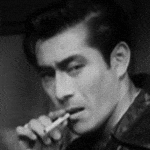|
The problem with any single combat in film is that they, as a rule, are used to build tension. Consequently they last far longer than historical examples. There are other ahistoricities that choreographers include to provide visual interest and dramatic clarity (exaggerated movements, twirls, unnecessary parries, unrealistic weaponry) edit: The closest thing to a "good" fight I've seen is this one from the ridiculous and wonderful Russian film 1612 (start at :40): https://www.youtube.com/watch?v=2SuCd9oqIY4 Rodrigo Diaz fucked around with this message at 17:37 on Apr 21, 2015 |
|
|
|

|
| # ? May 9, 2024 16:32 |
|
Flesnolk posted:A lot of the coroner rolls produced by this twitter account report people being murdered by clerks. What the hell was up with medieval clerks that they were murdering people so often? John de Thorpe, drowned in 1322 when thrown in tempestuous waters from his boat, the “Dongbot”
|
|
|
|
https://www.youtube.com/watch?v=4ZIsc6KPkKA
|
|
|
|
DandyLion posted:Seconding this. 'Alatriste' is to Renaissance fighting what 'Saving Private Ryan' is to WW2 war-torn hellscape realism. I rate it an order of magnitude better than anything else mentioned. The battle and combat scenes are fantastic, too bad it's such an awful adaptation otherwise. I'm a fan of the books and I found most of the movie really disappointing. They tried to cram in the entire sprawling series, so the pacing was painfully bad and the plot a complete mess. They really should have either cut a bunch of stuff or picked just part of Alatriste's story to explore, it could have been a fantastic epic period piece but instead it's "that movie with the good battles".
|
|
|
|
Someone should hand these guys an armoured fencing manual. 
|
|
|
|
I think they're just mma fighters that somebody gave armor and swords.
|
|
|
|
I think they might be Battle of the Nations vets, actually. I can't read Cyrillic, though, so I'm basing it on this article.
|
|
|
|
Guildencrantz posted:"that movie with the disappointing battles".
|
|
|
|
How commonly were mercenaries used by the Kingdom of Jerusalem? I read recently that Acre provided more in annual revenue for the KoJ than England did for the king of England and I'm having trouble rationalizing what they spent all that dosh on.
|
|
|
|
I don't really understand how mercenaries enter your question but Acre had a population of roughly 25,000 people during the Crusader era (the second largest city after Jersualem) and it's a major port for a region of perhaps 2 million people. Contemporary England is something of a backwater and most of it's rulers are French who don't necessarily view it as their primary land/title, and that doesn't change for some time. Richard the Lionheart, for example, is probably one of the most well-known English monarchs and the dude spent maybe 6 months of his adult life there and couldn't even speak the language.
|
|
|
|
Jamwad Hilder posted:I don't really understand how mercenaries enter your question but Acre had a population of roughly 25,000 people during the Crusader era (the second largest city after Jersualem) and it's a major port for a region of perhaps 2 million people. Contemporary England is something of a backwater and most of it's rulers are French who don't necessarily view it as their primary land/title, and that doesn't change for some time. Richard the Lionheart, for example, is probably one of the most well-known English monarchs and the dude spent maybe 6 months of his adult life there and couldn't even speak the language. I'm aware of it being considered a backwater, but I assumed England still produced a large amount of tax revenue given Richard was spending £7,000 in the last 1190s on English castles & defences when he had a total revenue of around £30,000. My understanding is that European monarchs spent most of their funds on castles and similar defenses, and that in Outremer most castles and defences were funded, owned, and manned by the religious orders. From that I was confused on what they spent all of their funds on and presumed it had to be mercenaries, etc., although I've never heard of any accounts where that takes place. I don't know anything about medieval courts and am probably underestimating their costs.
|
|
|
|
Ok, I get what you're asking now. I got hung up on the Acre/England comparison. Yes, the Kingdom of Jerusalem spent much more money on mercenaries than a contemporary kingdom would. They collected taxes, tributes from their neighbors, and were at a critical juncture of commercial trade so they had a ton of money they could spend. Commercial revenue that wasn't dumped back into trade would have been mostly used to address their manpower problem by hiring more-or-less permanent mercenaries from Europe or even Muslims (like the Turcopoles). Jamwad Hilder fucked around with this message at 20:44 on Apr 22, 2015 |
|
|
|
I remember a mention (from years back) of how envoys from the Kingdom to Western Europe were so rich and ostentatious that it might have undermined their war effort, since they didn't seem to need help that bad. Another claim (also from years back) was that royal officers like the seneschal or maybe even the butler lived better than most European kings.
|
|
|
|
Jamwad Hilder posted:even Muslims (like the Turcopoles). I though the Turcopoles were mostly Christian?
|
|
|
|
my dad posted:I though the Turcopoles were mostly Christian? I remember reading somewhere that the majority were probably Muslim in practice, but yes, nominally they were Christians. The Kingdom of Jerusalem also kind of used it as a blanket term for indigenous Syrians in their service.
|
|
|
Jamwad Hilder posted:I remember reading somewhere that the majority were probably Muslim in practice, but yes, nominally they were Christians. The Kingdom of Jerusalem also kind of used it as a blanket term for indigenous Syrians in their service. Medieval people were a bit fuzzy about concepts like race or nationality (they didn't really exist) so this poo poo happens all over the place.
|
|
|
|
|
Iseeyouseemeseeyou posted:How commonly were mercenaries used by the Kingdom of Jerusalem? I read recently that Acre provided more in annual revenue for the KoJ than England did for the king of England and I'm having trouble rationalizing what they spent all that dosh on. Ian Heath writes that hired soldiers were extremely common, receiving regular wages, and even feudal knights would often receive a “money fief” in the form of regular payments in goods and kind rather than in land. So they received their money like mercenaries, although without the connotations we usually attach to mercenaries.
|
|
|
|
A question about the origins of japanese budo (aka samurai) philosophy: In the fencing thread I took this ImplicitAssembler posted:Sutemi is an important and recurring concept in JSA. While often translated as "Throwing ones life away", it''s better translated as "Concentration and effort with all one’s might, even at the risk of death.". Judo has sutemi-waza, which translated as "sacrifice-throws". HEY GAL posted:It's not feudalism, it's the late 19th/early 20th century's view of the Japanese past which, hilariously, was filtered through a reverse-weeaboo's idea of what medieval Europe had been like. Interesting. Many years back I read something about the origins of the japanese samurai philosophies. Some recurrent concepts of those are the conflict between giri (duty) and ninjo (human feeling) that the samurai has to constantly resolve one way or the other because he is expected to kill others and even himself as his lord requires. You have probably seen a movie with a story like that, its a really big topic for japanese drama. Now, as far as I remember, that philosophy started after a really long japanese civil war had finally ended, and the warriors had actaally time to to some philosophing because they no longer had to throw themselves into the blender. Sadly I forgot the years and what civil war they actually talked about, so Maybe someone in the thread can shed some light on this?
|
|
|
|
I don't know what HEY GAL's referencing, but I've heard it said that the book Hagakure was a big influence on how later generations came to view the samurai mindset. It's big on death and dying and living as if you've already dead and being loyal unto death and so on and so forth. It's a good read, if you're into weird anecdotes about the bad old days. The thing is, it was written in the early 18th century, about a hundred years after Tokugawa Iyeasu won the battle of Sekigahara and began the age of peace we know as the Edo period. The guy whose anecdotes the book consists of, Yamamoto Tsunetomo, was a cranky old goon who became a monk because he was forbidden from committing suicide when his master passed away. Throughout the book he complains how samurai nowadays are complete wimps who don't even want to die and get off my lawn already gosh darn it! But, obviously, this sort of philosophy must've come from somewhere. Retainers committing suicide after their master passed was a big enough deal during the Edo period that the shogun had to step in and say "hey guys stop or we'll kill your kids or something". 
|
|
|
|
Nektu posted:A question about the origins of japanese budo (aka samurai) philosophy: Probably referring to the Warring States period. Samurai were the big important warriors during this period, and afterwards when there was no fighting to do and when a lot of the samurai were basically a class of mid-level clerks is when a lot of this philosophizing was developed by people who never actually participated in any serious fighting but still thought and wrote a lot about that poo poo because they had gently caress else to do.
|
|
|
|
Not a fully-fledged expert on this, but I can give a quick (and fairly inaccurate, please consult a real historian before throwing these around) rundown. You're thinking about the Sengoku Jidai, a period which Wikipedia states runs from 1467 to 1603 and which arose essentially out of overpowerful daimyos noticing that the central authority, the shogun, didn't actually have the real power to stop them doing what they wanted, and what they wanted was to get even more powerful. As you might expect from a conflict rooted in revolt against established authority, the whole thing was pretty ruthless and pragmatic and there's plenty of situations where retainers turned on their lords or lords turned on their allies - in fact, the big battle that decided the final victory of the wars was decided thanks to a bout of treachery (the Battle of Sekigahara, to be exact). After the war, Tokugawa, the new Shogun, made drat sure that he didn't have to worry anymore about daimyos or anyone else, including uppity peasants, rising up anymore. We'll skip over the exact methods used for now, but the short version is that the samurai became administrators and bureaucrats instead of warriors since there weren't any more wars to fight. However, they still derived their social prestige from their status as warriors, so a couple of them got it into their heads that samurai are to be respected because they preferred death to dishonor and were noble and virtuous and so on. Most samurai of the period, I gathered, didn't care much and didn't pay more than lip service to this philosophy because they were busy throwing rad parties and doing paperwork, but it was a comforting sort of thing to think and anyways it was easy to talk about how you'd face death before dishonor when there wasn't a realistic prospect of either happening. Fast forward to the 19th century and the end of Japan's isolation and their furious attempts to modernize so as not to get gobbled up by the Western powers. Part of this modernization involved switching from a military force derived from hereditary feudal warriors to massed peasant armies with rifles, which understandably caused some of the elites (mostly old, rebranded daimyo families) to get a little antsy about loyalty. So someone dug up the old samurai ethics manuals about death before dishonor, proclaimed that this was THE REAL TRADITIONAL SAMURAI WAY and taught soldiers that now THEY are the new samurai, with all the pride and status this entails but also the bonds of loyalty and duty, which was a bit of propaganda that stuck. And that's how samurai are now universally considered upstanding paragons of honor and duty despite most being in reality treacherous backstabbing bastards at first and later desk warriors. (That's not to say that stuff like seppuku didn't happen, but it wasn't by any means 100% prevalent.) Tomn fucked around with this message at 20:38 on Apr 27, 2015 |
|
|
|
This was definitely a book from the 19th/20th century, but I forgot the author's name. I'll ask the person who told me about the conference where she heard about it.
|
|
|
|
HEY GAL posted:This was definitely a book from the 19th/20th century, but I forgot the author's name. I'll ask the person who told me about the conference where she heard about it. Probably Inazō Nitobe's "Bushido", originally written in English while he was in the US, in 1899 haha Edit: But I'm not sure how influential that book was in Japan, though it was certainly influential in the West. LimburgLimbo fucked around with this message at 23:18 on Apr 27, 2015 |
|
|
|
Tomn posted:Not a fully-fledged expert on this, but I can give a quick (and fairly inaccurate, please consult a real historian before throwing these around) rundown. This is pretty spot on but I'll add that part of the pacification process was the Shogun's trying really hard to cement the existing social castes as absolute.* So the shogun needed to simultaneously emphasize the samurais' 'role' as a warrior while at the same time defanging them. Carrying swords wasn't just a fashion the samurai picked up to compensate for their now neutered status, it was legally mandated that they carry them at all times as sign of their social station, meanwhile the peasant classes were being forcibly and emphatically disarmed. The dissonance between the samurai's actual role and their societally proclaimed one manifested in a few ways, and you could see the cracks forming even before Perry showed up, but the shogun tried to make sure it expressed itself in pointless acts of 'honor' and petty duels. That said, honor and loyalty were well regarded traits in the Sengoku times... if only because it was so distressingly rare. Ruthlessness led Oda Nobunaga to the top of the pile but loyalty has it's own pragmatic value. Oda commited suicide after a vassal turned on him after he [Oda] sent that vassal's mother to another party as a hostage held as collateral for a deal he deliberately broke. Tokugawa's great strength was knowing when loyalty and honor was the pragmatic choice and when treachery was the best option. *Mostly this was because the gun and long pike had, as in Europe, upset the 'normal' military situation that was dominated more by a horse and bow warrior class. Preventing that crossover put a ceiling on how militarised one daimyo could get (without, at the very least, openly defying the status quo and getting dogpiled for it) and also prevented 'Lord Such and such is arming and drilling his peasants so I must as well etc. etc. etc.'
|
|
|
|
The gun had been introduced to Japan long before the Tokugawa shogunate. Portuguese matchlocks were introduced to Japan in 1543, and they were very rapidly adopted. Japan, being part of China's sphere, already had a familiarity with gunpowder, but the European weapons took that to the next level. Nobunaga was already arming masses of his peasants with matchlocks and using them to conquer his rivals. And after unity, Hideyoshi had a massive veteran army of musketmen that he used to devastating effect in the invasion of Korea. The emphasis on the sword over other weapons such as the bow, spear, and musket, were Tokugawa era cultural baggage. Swords were the only weapons allowed, and quite frankly, an army of nothing but swordsmen is worthless, which of course was good if you didn't want a bunch of aristocrats stirring everything up into a civil war.
|
|
|
|
Phobophilia posted:The gun had been introduced to Japan long before the Tokugawa shogunate. Portuguese matchlocks were introduced to Japan in 1543, and they were very rapidly adopted. Japan, being part of China's sphere, already had a familiarity with gunpowder, but the European weapons took that to the next level. Nobunaga was already arming masses of his peasants with matchlocks and using them to conquer his rivals. And after unity, Hideyoshi had a massive veteran army of musketmen that he used to devastating effect in the invasion of Korea. Yup. That's the army that Ieyasu wanted to defang. I'm not sure that all the musketmen were peasants, (and we should not forget that the long pike was also there to protect the musket men) but the militarization of previously under-militarized classes was part of the run away growth in power of the regional lords and thus the Sengoku instability. I think the other thing to note is that this wasn't just an attack on militarization, the shogun's also took wives and first born sons as hostages and demanded that each lord visit Edo so that they a. got constant reminders of the shogun's power b. spent a lot of money, esp. because they had to maintain their Edo estates while at home and their home estates while in Edo, and c. spend a lot of time travelling and less time plotting/administrating.
|
|
|
|
On this note, I've never had a satisfactory answer as to how Japan developed a horse archer culture. Japan is extremely mountainous. China, I can understand, it was to counteract steppe nomads who had a horse archer culture. Korea, I can understand, they were originally steppe nomads as well, even if a large fraction of the Korean peninsula is mountain. Cultural exchange between Japan and the mainland? Or perhaps was horse culture purely restricted to the upper classes (like Europe)?
|
|
|
|
Phobophilia posted:On this note, I've never had a satisfactory answer as to how Japan developed a horse archer culture. Japan is extremely mountainous. China, I can understand, it was to counteract steppe nomads who had a horse archer culture. Korea, I can understand, they were originally steppe nomads as well, even if a large fraction of the Korean peninsula is mountain. I have no knowledge of non-noble cavalry in Japan, although this is not really my area of expertise. I think “ashigaru” actually means light-foot, so the idea that horse-culture be restricted to the upper classes is very likely.
|
|
|
|
Japan is very mountainous so your right that most armies wouldn't have been able to field a ton of non-noble cavalry. One exception might have been the Takeda clan. What was then Kai province was excellent land for grazing and farming, and they were able to field probably the best cavalry in Japan. Takeda Shingen's propensity for using cavalry charges as a battlefield tactic seems to suggest, in my opinion at least, that they were able to support a large enough number of mounted warriors that they certainly couldn't have all been samurai. Although Takeda Shingen is also notable because he insisted that his mounted samurai fight primarily with lances instead of bows, so maybe not.
|
|
|
|
This might be mildly interesting if you're into everyday stuff of the craftsman of a few hundred years ago. Namely the process of making glue. A few weeks ago, this was released and there's a chapter about bowmaking in it, because the author also had a passion for making bows. Now, this is interesting by itself that I could go into detail in another post if there's interest, but let's stick with what I felt begged examination. Why? Sturgeon bladder glue is the best (not boring you with spergy reasons), but it's hard to come by and super expensive, so that looked like an alternative. Gao Ying talks about glue, he says that it was made of the Yellow croaker's air bladder. Luckily, these fish aren't extinct (yet. Don't worry, the chinese are trying hard to make them disappear). There's 2 different species that this could refer to. The large yellow croaker (Larimichthys crocea) and the small yellow croaker (Larimichthys polyactis). The large one has pretty large air bladders and is used in TCM for all kinds of nonsense, and you guessed it, it's endangered and super expensive. The small one isn't, and there's a guy who offers these dried bladders. I ordered some of these small ones for too much money and set out to cook glue.  Soak 100g in water for 24h, run it through the blender. When it's as small as possible, put it in a pot, add water, 5x the dry weight of the bladders. Put in a bain marie like this and keep it at 45°C  After 3 hours or so, you can use an immersion blender (a large mortar would have been better in the beginning, but I don't have one). The result is this soft flaky stuff, which reminds one of the appearance of Miso soup.  I hoped that I would completely dissolve, but it was still there after 12 hours, so it was time to filter it out. 2 pieces of cloth were used for that job, the finest in the end obviously. This is the clear glue that came out in the end. From what I can tell about my experience with these glues, the concentration was about 5-10%  I lost track of how much water was added over the course of those 12 hours, but I let it evaporate, so that about 300ml were left. It's hard to judge the final concentration, but I estimate that it is between 15-20% The glue has been poured on a metal plate and is drying atm, already gelled. When it is completely hard in a week or so, I will make some of it ready for a few tests. Glue strenght and gelling time. I hope it doesn't start to rot in the meantime. From what I've seen so far, I don't doubt that it will make ok glue, but the question about gelling time (which will give you improved working time on the piece) is very important. Sturgeon bladder glue is exceptional in these 2 aspects, and it also has an extremely high yield at (100g dried bladder = 90g dry glue). This material definitely doesn't dissolve so readily, and I didn't want to overdo it. Power Khan fucked around with this message at 13:03 on May 4, 2015 |
|
|
|
i love this post
|
|
|
|
Caberham told me that you could also cook a good soup with it. It doesn't smell at all. Not like hideglue.
|
|
|
|
Phobophilia posted:On this note, I've never had a satisfactory answer as to how Japan developed a horse archer culture. Japan is extremely mountainous. China, I can understand, it was to counteract steppe nomads who had a horse archer culture. Korea, I can understand, they were originally steppe nomads as well, even if a large fraction of the Korean peninsula is mountain. Korea and Japan have always had huge amount of cultural exchange going on, even if nationalists on both sides would rather ignore that. (Or, better yet, claim that they did it first - and those barbarous bastards stole it from us!) Best bet right now (it's all a little pre-history) but the first 'Japanese' agriculturalists probably came from Korea and then the locals saw how well that was working and joined in. The country is very mountainous but the people tend to live in the plains and valleys, even now, with Japan as crowded as it is, massive swaths of the country remain forested mountains simply because it's too much of a bother to flatten it. So horsemen had room to ride around. This was from a brief lecture before we moved on to more cultural stuff, but (very) early Japanese horse archery has been described to me like Iliad-style or WWI fighter ace combat. You'd ride out, pick an enemy rider, insult his mother, proclaim your own prowess, and then the two of you would ride about for a while plinking at each other with bows. Retainers mostly hung around and ran new quivers out to the riders. But yeah, the military aristocracy was built in part on the supremacy of cavalry and archery and the fact that those two required expensive equipment and were skills took a long time to develop.
|
|
|
|
Archery related: http://www.manchuarchery.org/did-qing-ban-archery-mongolia
|
|
|
|
How often were flaming arrows used in ancient/medieval warfare? You see them all the time in movies but I always wondered if they were very effective.
|
|
|
|
In naval engagements? Tbh, I've never came across much mention of fire arrows so far. I know that some smiths make fire cage arrows, but no idea where they were used. You can read a whole lot about ancient archery and never come across a single mention of fire arrows.
|
|
|
|
Your Gay Uncle posted:How often were flaming arrows used in ancient/medieval warfare? You see them all the time in movies but I always wondered if they were very effective. I can't think of a case of flaming arrows per se, though they existed. Orderic Vitalis definitely mentions arrows having their tips heated in a brazier and used to light buildings on fire during a particularly dry summer, but that's as close as I can think of.
|
|
|
|
Sun Tzu mentions that one of the uses of fire in warfare is to "hurl dropping fire amongst the enemy". Later commentators indicated that this could be done by firing flaming arrows into the enemy camp. http://suntzusaid.com/book/12/1
|
|
|
|
Everything went better than expected. It will be about 50g dry glue in a few days. 100g dry bladders to 50g glue. That's ok from what I've been told. Using a mortar could improve the yield. Next come the properties.
|
|
|
|

|
| # ? May 9, 2024 16:32 |
|
Invincible Spleen posted:Sun Tzu mentions that one of the uses of fire in warfare is to "hurl dropping fire amongst the enemy". Later commentators indicated that this could be done by firing flaming arrows into the enemy camp. Or jars of burning liquid.
|
|
|



















